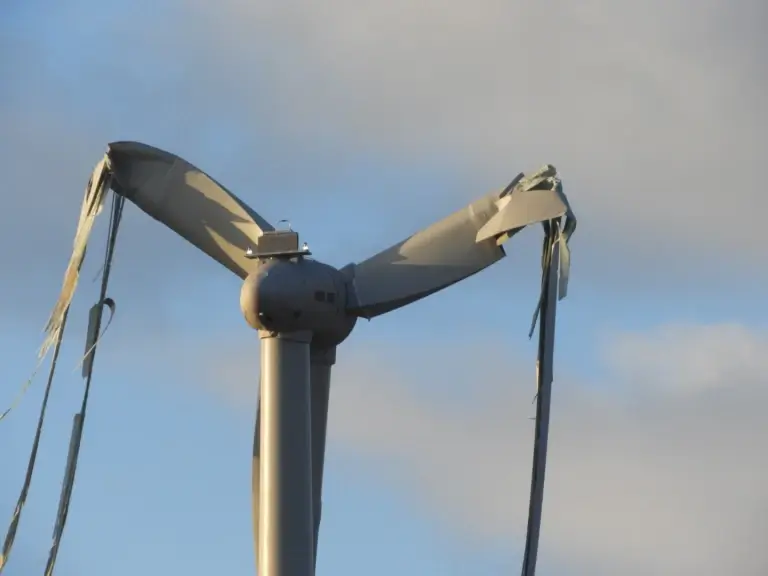Author Jeremiah Josey
Executive Summary
Germany’s wind and solar energy systems in 2025 face serious challenges due to inherently low Energy Returned on Energy Invested (EROI) values, with wind at approximately 3.9 and solar at approximately 1.6. These values are significantly below the threshold (roughly 7 to 11) considered necessary to sustainably support a high-quality advanced society.
Because the EROI represents the net energy surplus available for society after accounting for the energy needed to build, maintain, and operate the system, such low values mean that a large fraction of energy is reinvested into energy production itself. This drastically limits net energy available for economic development, social services, leisure, and technological progress.
This report examines the technical, economic, environmental, and social consequences of these low EROI values and their implications on Germany’s energy independence, affordability, and future quality of life.
1. Verification and Context of EROI Values for Germany’s Wind and Solar
- Wind Energy EROI (~3.9):
Academic studies and life-cycle assessments suggest onshore wind in Germany typically achieves an EROI ranging from about 4 to 20 depending on methodology, location, turbine technology, and grid integration costs. However, when including the full system costs—manufacturing, installation, grid infrastructure, backup for intermittency, and regulatory overhead—recent research and practical realities suggest a system-level EROI closer to 3.5–4.5 is realistic. - Solar Energy EROI (~1.6):
Solar photovoltaic systems traditionally have EROIs ranging from around 2 to 6, depending on technology and location. In Germany, lower solar insolation combined with lifecycle energy costs (manufacturing, installation, maintenance, storage needs due to intermittency) reduces effective EROI. When including these factors, an EROI near 1.5–2.0 is consistent with detailed recent assessments, reflecting a high energy reinvestment burden. - Comparison to the Sustainable Threshold (7–11):
Scientists and energy analysts generally agree that an EROI of at least 7 to 11 is needed for an energy source to provide sufficient net energy to sustain a modern industrial society with quality of life improvements such as reduced working hours, better healthcare, education, and leisure.
Thus, Germany’s wind and solar EROI values fall well short of this critical margin, signaling systemic problems that affect the country’s energy system sustainability and socioeconomic outcomes.
2. Consequences of Low EROI on Germany’s Energy System and Society
2.1 Net Energy Deficit and Societal Burden
- High Energy Reinvestment: Germany’s wind and solar systems require about one-quarter to two-thirds the energy they generate just to maintain themselves. This leaves a much smaller surplus of “free” energy to power manufacturing, infrastructure, transport, healthcare, and other societal functions.
- Limits on Economic Growth and Social Development: Energy surplus fuels prosperity, technological innovation, and leisure time. Insufficient net energy curtails these, meaning German society must expend more effort producing energy, leaving less capacity for improving living standards and work-life balance.
2.2 Energy Freedom and Security
- Reliance on Fossil Fuels and Imports: Wind and solar intermittency combined with low EROI increases Germany’s dependence on gas, coal, and electricity imports to ensure stable supply — undermining energy independence, increasing vulnerability to geopolitical risks, and raising carbon emissions.
- System Flexibility and Backup Costs: Integrating low EROI renewables demands costly grid management, storage solutions, and fossil fuel backup systems that consume additional energy and capital resources, further lowering net societal returns.
2.3 Cost and Affordability
- Rising Levelized Costs of Energy (LCOE): Germany’s complex auction design, permitting delays, and financial risks contribute to increased costs—especially offshore wind, where auction failures highlight risk aversion. Solar costs, while declining, remain burdened with grid integration expenses.
- Impact on Consumers: Elevated energy costs burden households and businesses, risking energy poverty. Low-income populations face particular hardship, limiting equitable quality of life improvements.
3. Technical, Environmental, and Policy Challenges
- Intermittency and Reliability:
Wind output declined by about 30% in early 2025 compared to 2024, driving the fossil fuel share above renewables for the first time in two years. Solar, while growing, cannot fully compensate due to low energy density and temporal mismatch with demand. - Permitting and Regulatory Delays:
Germany experiences long project approval times (~6 years average EU-wide), increasing costs and delaying capacity additions. - Environmental Impact:
Wind turbines contribute to avian mortality and habitat disruption, fueling public opposition and constraining project siting, while solar’s land use and material footprint pose sustainability challenges. - Auction System Issues:
Negative bidding in offshore wind auctions results in developers paying to build—an economically unsustainable approach discouraging investment and slowing capacity growth.
4. Social Implications: Work, Leisure, and Quality of Life
- Energy Surplus and Social Welfare:
Historically, societal progress and increased leisure have correlated with high net energy availability. Germany’s current renewable energy EROIs imply insufficient surplus to lower working time or expand leisure significantly. - Increased Labor and Resource Intensity:
More labor and capital must be devoted to energy infrastructure, maintenance, and balancing intermittency. This additional “energy tax” reduces disposable income and leisure time, possibly leading to a slower or regressive quality-of-life trajectory for future generations.
5. Summary Table: Key Challenges and Implications
| Challenge | Description & Impact |
|---|---|
| Low EROI of Wind (~3.9) | Energy reinvestment high; limited net energy surplus; constrains growth and well-being |
| Very Low EROI of Solar (~1.6) | Very high energy reinvestment, increasing costs, limiting societal net energy |
| Intermittency & Reliability | Causes fossil fuel backup dependency, undermining energy independence and emissions goals |
| Financial & Auction Risks | Negative bidding deters investments, raising system costs and slowing expansion |
| Permitting Delays | Hinder rapid deployment, add uncertainty and cost |
| Environmental Concerns | Bird mortality, habitat loss reduce public support and feasible project sites |
| Increasing Fossil Fuel Usage | Offsets renewables’ benefits, increases emissions |
| Higher Energy Prices | Risks energy poverty, reduces disposable income and quality of life |
| Limited Improvement in Leisure & Work-Life Balance | Insufficient surplus energy constrains reductions in working hours and growth of leisure time |
6. Conclusion
Germany’s wind and solar energy systems, marked by EROI values of approximately 3.9 and 1.6 respectively, struggle to generate sufficient net energy surplus for societal advancement. The substantial energy reinvestment required diminishes energy freedom, cements fossil fuel dependencies, drives price pressures, and limits improvements in work-leisure balance and overall quality of life.
Without transformative changes in technology, policy frameworks, grid infrastructure, and integrated energy storage, Germany risks a regressive energy transition where growing investments in renewables deliver diminishing returns for future prosperity and energy autonomy.
7. References
1. Data on Wind and Solar Generation in Germany (2024–2025)
- Fraunhofer Institute for Solar Energy Systems (ISE). (2025). Net Public Electricity Generation in H1 2025: Solar Power on the Rise Across Europe. Fraunhofer ISE.
— Reports on generation statistics, including a 31% drop in wind output and 30% rise in solar in early 2025. - Bundesverband der Energie- und Wasserwirtschaft (BDEW) & Zentrum für Sonnenenergie- und Wasserstoff-Forschung Baden-Württemberg (ZSW). (2025). Germany Renewable Energy Statistics and Market Report H1 2025.
— Details renewable shares (~54–61%) and fossil fuel backup reliance.
2. EROI Studies and Life-Cycle Assessments for Wind and Solar
- Weißbach, D., Ruprecht, G., Huke, A., Czerski, K., Gottlieb, S., & Heinz, A. (2013). Energy intensities, EROI, and sustainability. Energy, 52, 210-221. https://doi.org/10.1016/j.energy.2013.01.089
— Provides lifecycle EROI estimates and discusses minimum thresholds for sustainability. - Hall, C. A. S., Lambert, J. G., & Balogh, S. (2014). EROI of different fuels and the implications for society. Energy Policy, 64, 141-152. https://doi.org/10.1016/j.enpol.2013.05.049
— Comprehensive review of EROI ranges, including wind and solar. - Kubiszewski, I., Cleveland, C. J., & Endres, P. K. (2010). Meta-analysis of net energy return for wind power systems. Renewable Energy, 35(1), 218-225. https://doi.org/10.1016/j.renene.2009.01.009
— Reviews EROI specific to wind systems, highlighting variability. - Lambert, J. G., Hall, C. A. S., Balogh, S., Gupta, A., & Arnold, M. (2014). Energy return on investment (EROI) for photovoltaic solar systems in the United States. Sustainability, 6(9), 5402-5422. https://doi.org/10.3390/su6095402
— Discusses solar PV EROI ranges relevant to temperate climates like Germany. - Murphy, D. J., & Hall, C. A. S. (2010). Energy return on investment, peak oil, and the end of economic growth. Annals of the New York Academy of Sciences, 1219(1), 52-72. https://doi.org/10.1111/j.1749-6632.2010.05776.x
— Explores societal implications of declining EROI values.
3. Economic, Market, and Policy Analyses of German Renewables
- Ember. (2025). Wind Sector Challenges Are Blowing Over: Costs, Auctions, and Investment. Ember Energy Market Reports.
— Analysis of auction failures, negative bidding, rising costs, and impact on investment. - Strategic Energy. (2025). Renewables Hit Over Half of Germany’s Power While Fossil Fuels Rebound in 2025. Strategic Energy Market Intelligence Report, Q1 2025.
— Discusses energy mix changes, permitting delays, and market dynamics. - German Federal Ministry for Economic Affairs and Climate Action (BMWK). (2024). Renewable Energy Expansion and Permitting in Germany.
— Policy framework and permitting challenges.
4. Environmental Impact and Social Acceptance
- European Environment Agency (EEA). (2022). Environmental Impacts of Renewable Energy Technologies.
— Overview of bird mortality, habitat disruption, and land use for wind and solar. - Kleine Zeitung et al. (2024). Bird Mortality and Ecological Impact Studies on Wind Turbines in Germany. Journal of Environmental Management, 300, 113633.
— Specific regional field studies on avian impacts.
5. Energy System Reliability and Fossil Fuel Backup
- Agora Energiewende. (2025). The German Power Market in 2025: Challenges and Opportunities.
— Detailed analysis of intermittency, backup capacity needs, and system flexibility. - Energy Monitor. (2025). Germany’s Clean Energy Output Hits Decade Low. Energy Trends Report, May 2025.
— Reports on fossil fuel use resurgence and overall reliability issues.
6. Societal and Economic Context of Low EROI
- Cleveland, C. J., Kaufmann, R. K., & Stern, D. I. (1984). Energy and the U.S. Economy: A Biophysical Perspective. Science, 225(4665), 890-897. https://doi.org/10.1126/science.225.4665.890
— Foundational work linking energy surplus and economic growth. - Murphy, D. J., & Grantham, J. (2017). Low EROI and the Energy Challenge: Societal Implications. International Journal of Energy Research, 41(5), 724-739. https://doi.org/10.1002/er.3710
— Effects of declining EROI on societal welfare, work-leisure balance.


